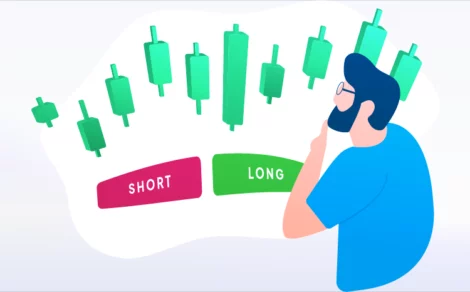Are you finding it challenging to keep up with daily fluctuations in the stock market? Positional trading offers a hassle-free alternative, allowing you to hold stocks for the medium to long term and capitalise on broader market trends.
Choosing this strategy enables traders to hold medium to long-term price movements in the stock market. This contradicts day trading, which primarily focuses on purchasing and closing positions on the very same day.
Continue reading this blog to gain detailed insight about what is positional trading, its benefits, drawbacks and more.
What is Positional Trading?
Positional trading is an effective investment strategy that allows shareholders to buy and hold stocks with a long-term approach. By following this strategy, shareholders can disregard daily price fluctuations and focus more on long-term growth.
Here, investors primarily focus on identifying emerging trends and continuing long-term investments to maximise potential benefits. In other words, position trading occupies a significant position in the market and holds it for months or even years. A specific macroeconomic trend or theme is followed as a basis for this approach.
Position traders are classified as investors rather than traders in the market. Only passive investors buy and hold stocks for a set period. Positional trading is an effective strategy, especially for those seeking long-term goals and willing to maintain their positions for an extended time. This approach is generally much less stressful than day trading and allows investors to benefit from significant market trends.
Working on Positional Trading
In positional trading, traders hold their investment for weeks, months and even years. They do not even worry about fluctuations in prices. Instead, their main focus remains on long-term trends and opportunities. Thus, before investing, making a thorough analysis of charts, the performance of the company and economic conditions is a must. The main goal of traders however remains to incur profits as the prices of stocks increase over time.
Unlike day traders, positional traders are not involved in the immediate buying and selling of stocks. They wait for the right time. Alongside this, the traders even believe that ups and downs in the market do not impact the overall trend. Thus, fundamental and technical analyses are often used for buying and selling stocks.
To follow this strategy, however, gaining a strong understanding of the market conditions is essential. It also needs patience as profits take time to occur. There are also risks associated with sudden changes that occur in market trends. Thus, smart research and proper planning can help traders to succeed in positional trading.
What are the Benefits of Positional Trading?
There are several benefits of positional trading. Some of them are explained as follows:
-
Reduced Stress Levels
Positional trading releases you from the burden of having to keep an eye on stock prices daily leading to less stress than day trading. Day traders generally cannot move themselves away from their screens and are constantly vigilant for price movement.
Whereas, positional trading allows you to lead your ordinary life without having to watch price movements constantly. This is very good for people with busy lifestyles as watching the market all the time may lead to mental fatigue. With less emotional stress, you stay mentally healthier.
-
Lower Transaction Costs
In most cases, every time you buy or sell, you incur certain brokerage fees. If you do this too often, you wind up spending huge sums on transaction charges and cut down profits.
That is not the same with positional trading. If you hold a stock for longer, you will have fewer trades. As a result, the commission is substantially smaller, thus saving you money in the long run.
-
Long-term Growth Potential
It is a well-known fact that stock market investments yield better returns with a long-term outlook attached. Prices of stocks may be extremely volatile in the short term but over the longer time horizon, short-term variations in prices usually tend to even themselves out.
-
No Need to Time the Market
Even the best investors agree that predicting how the markets will behave is very challenging. Therefore, spending time in the market is more important than trying to time it. With positional trading, you will not have to worry about market timing, allowing you to stay invested longer. This approach also increases your chances of making gains.
What are the Disadvantages of Positional Trading?
Let us look into some of the disadvantages of positional trading:
-
Lock in Capital for an Extended Time
In positional trading, the invested capital is locked in for a longer period. That means you should have enough funds for cash flow maintenance and to profit from other emerging trends. If this is not the case, you may need to abort a trade as you urgently need the cash. This move may cause you losses or result in a missed chance for profit.
-
Psychologically Challenging
Watching for stock price fluctuations for an extended period is psychologically taxing, particularly when underperforming during poor markets. It can, in turn, force one into impulsive decisions that would lessen the chances of reaping a profit.
-
Miss Out on Short Term Opportunities
The stock market is dynamic; hence the passive trader can afford to make use of short-term price movements. As a positional trader, you may lose out on the opportunity for short-term profit.
What are the Strategies to Follow for Effective Positional Trading?
Since positional trading enables holding stocks for a prolonged period, traders should choose strategies wisely. A well-chosen strategy helps traders decide when to buy and sell stocks while also reducing risks and increasing profits. Following discipline and keeping patience, traders can earn steady profits in positional trading.
Here are some effective strategies to follow for effective positional trading:
-
Support and Resistance Trading
Support and resistance trading is a widely used technical analysis strategy for spotting potential buy and sell opportunities in financial markets.
Support is a price level where buying pressure historically prevents further declines.
Resistance is a level where selling pressure typically halts price increases.
Traders use these key levels to identify optimal entry and exit points, enhancing their decision-making and risk management.
-
50-day Moving Average Trading
The 50-day moving average is a widely used technical tool for identifying short-term stock market trends. It calculates the average closing price over the past 50 days, assigning equal weight to each day.
When a stock’s price rises above its 50-day moving average, it suggests potential upward momentum. If the price drops below the moving average, it indicates a possible downtrend.
Traders rely on this indicator to assess market sentiment and make informed trading decisions.
-
Trading Breakouts
The market trading breakout strategy is the most popular among traders to benefit from huge price fluctuations in the financial markets. A breakout occurs when the price of the security moves beyond a significant resistance or support level, thus announcing a change in trend.
To locate probable breakout points, traders may use such technical analysis tools: trend lines, moving averages etc. When a breakout happens, traders enter either a long or a short position, corresponding to the breakout’s direction.
-
Pullback and Retracement Strategy
This strategy helps traders determine a security’s trend—up or down—by waiting for a temporary pullback before entering a trade. After the retracement, traders can go long or short, anticipating trend continuation.
A key advantage is lower entry risk compared to buying at peak levels. However, if the trend reverses, losses can occur, making stop-loss orders essential for risk management.
Final Thoughts
By now, you should have a clear understanding of what positional trading is. This trading strategy is an effective way to build wealth over the long term. While it demands a significant amount of patience, it also alleviates the stress of frequent trading.
Traders who are firm in their disciplined approach could expect to earn steady profits. However, inherent market risks are always there, which necessitate proper planning. With the right mindset and strategy, positional trading can be one of the best avenues to invest in stock markets and build wealth.
To make the positional trading method easy and hassle-free, Open a Free Demat Account with Torus Digital and continue trading.








